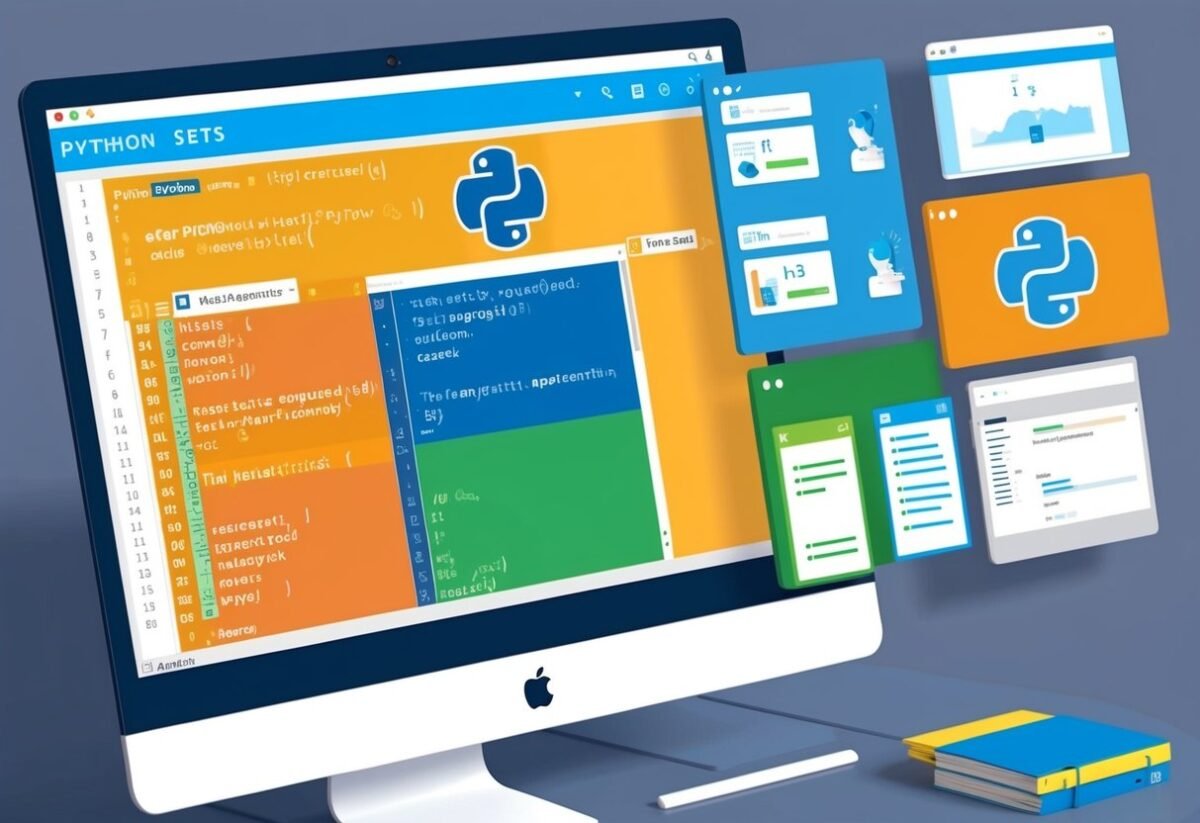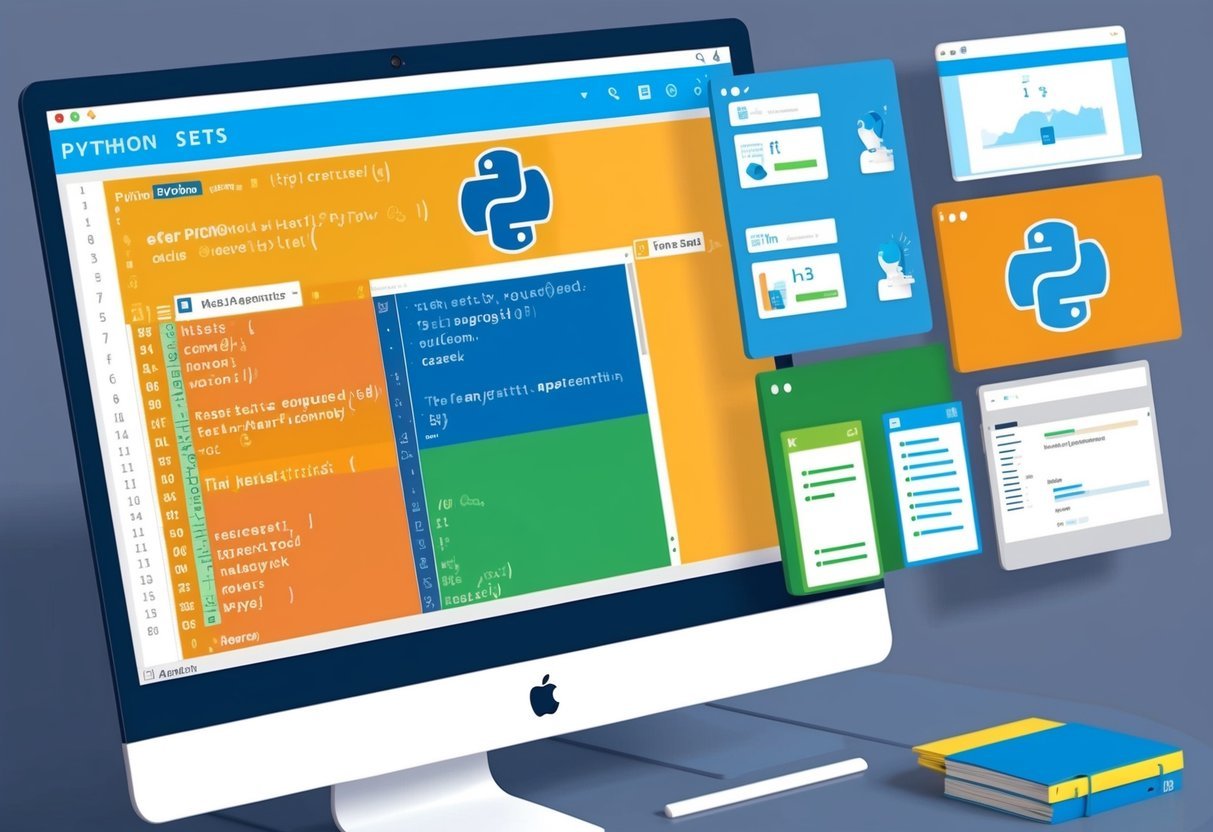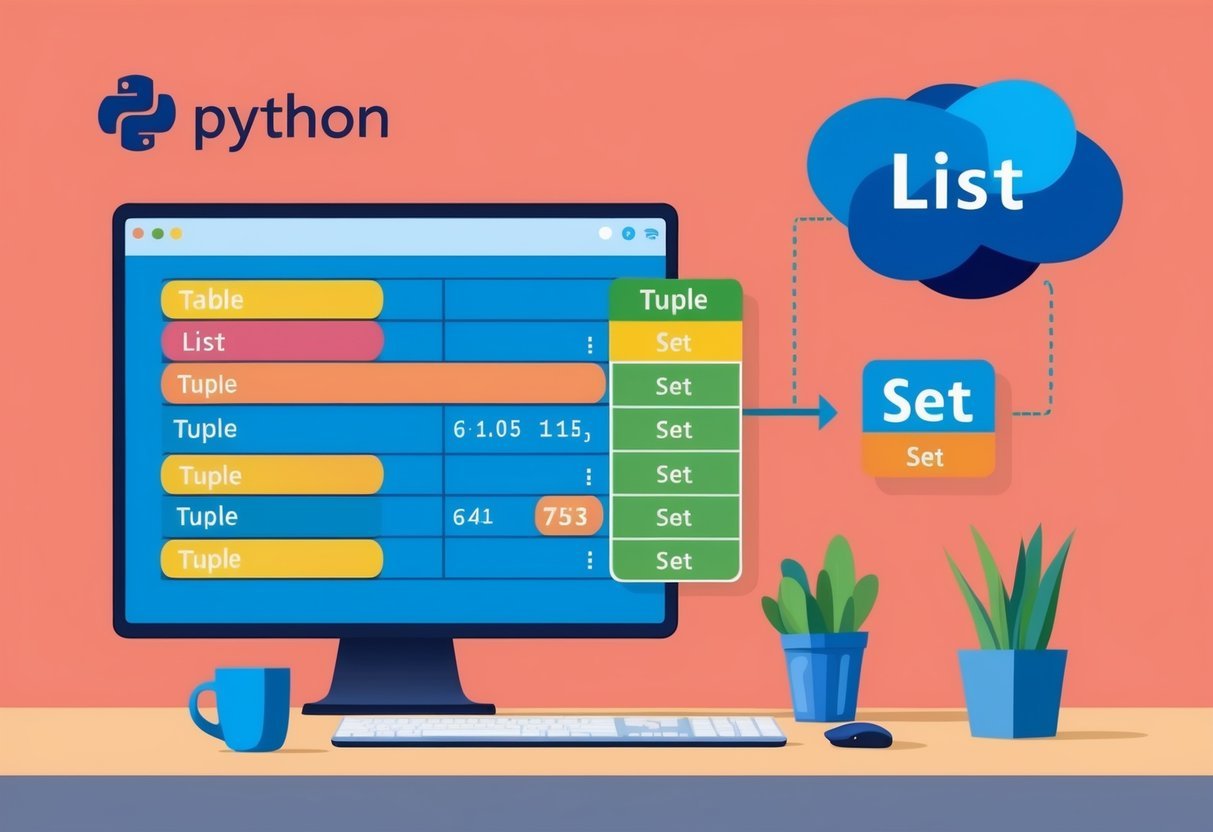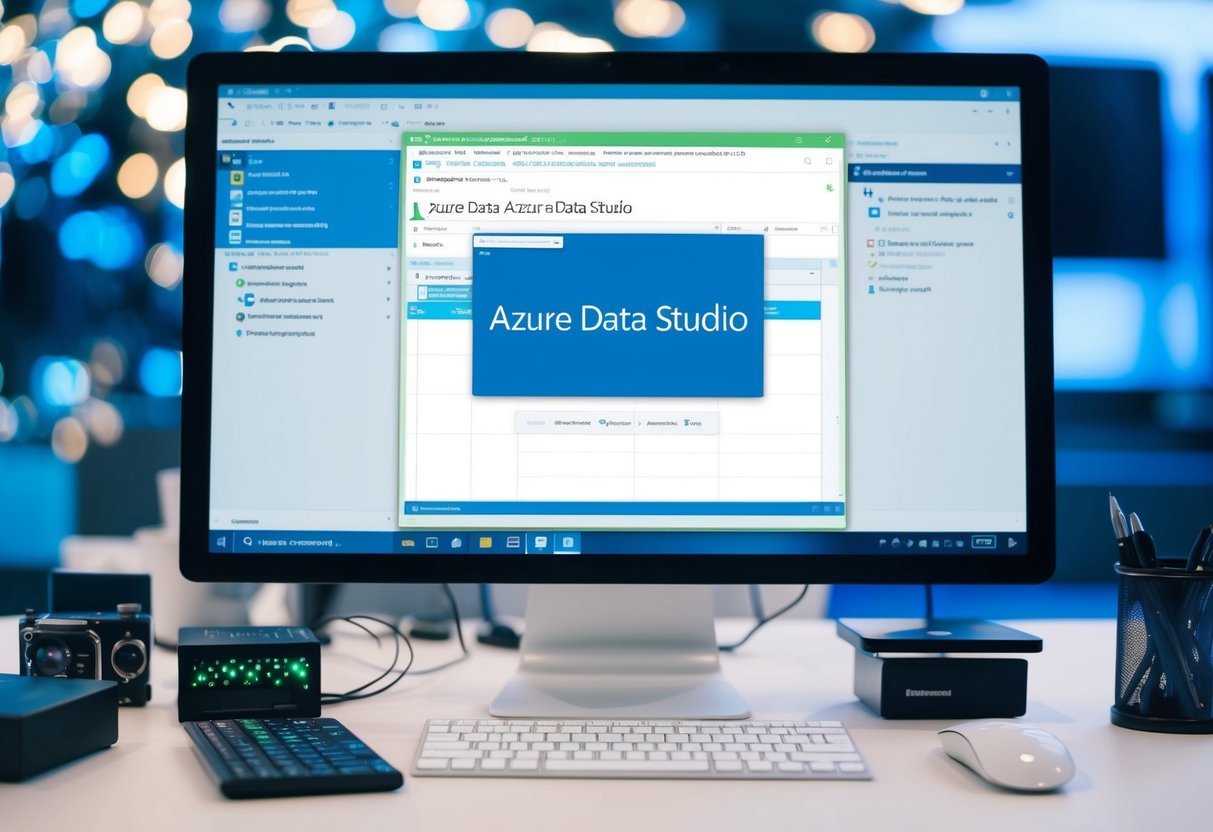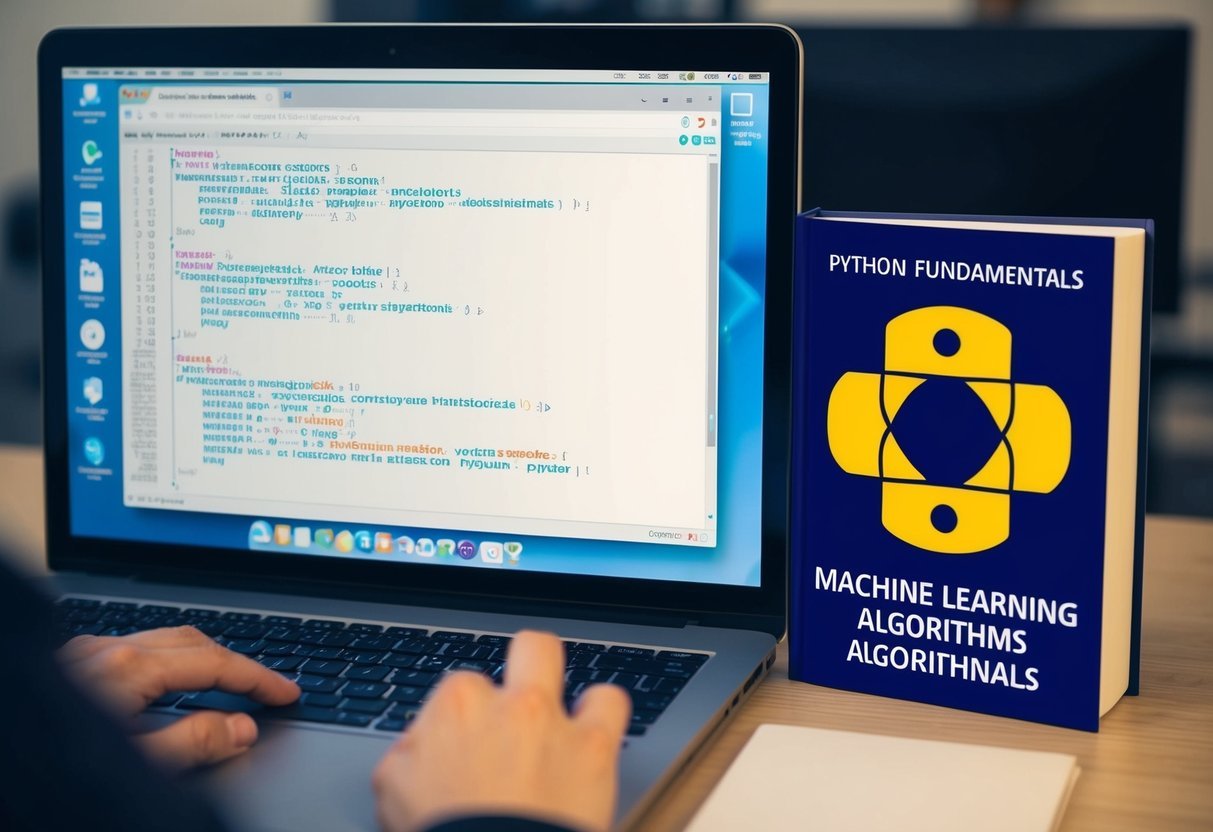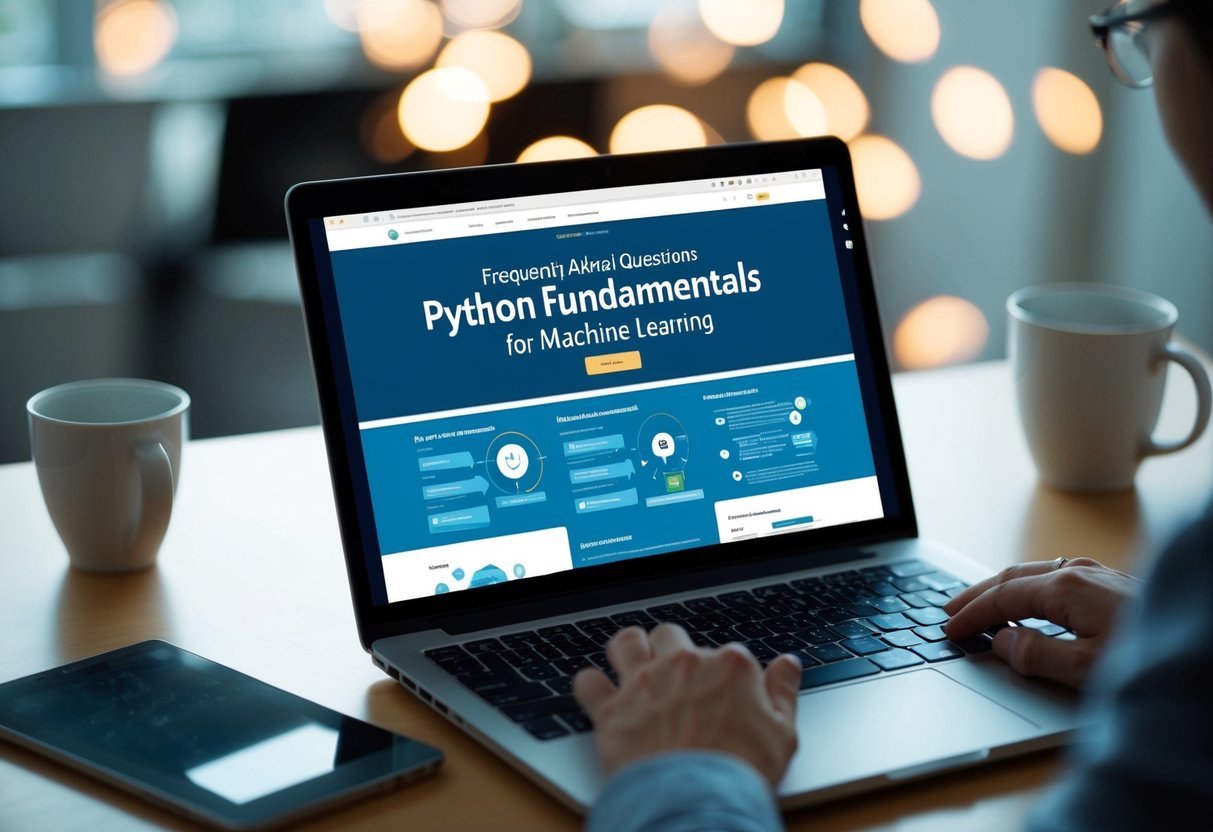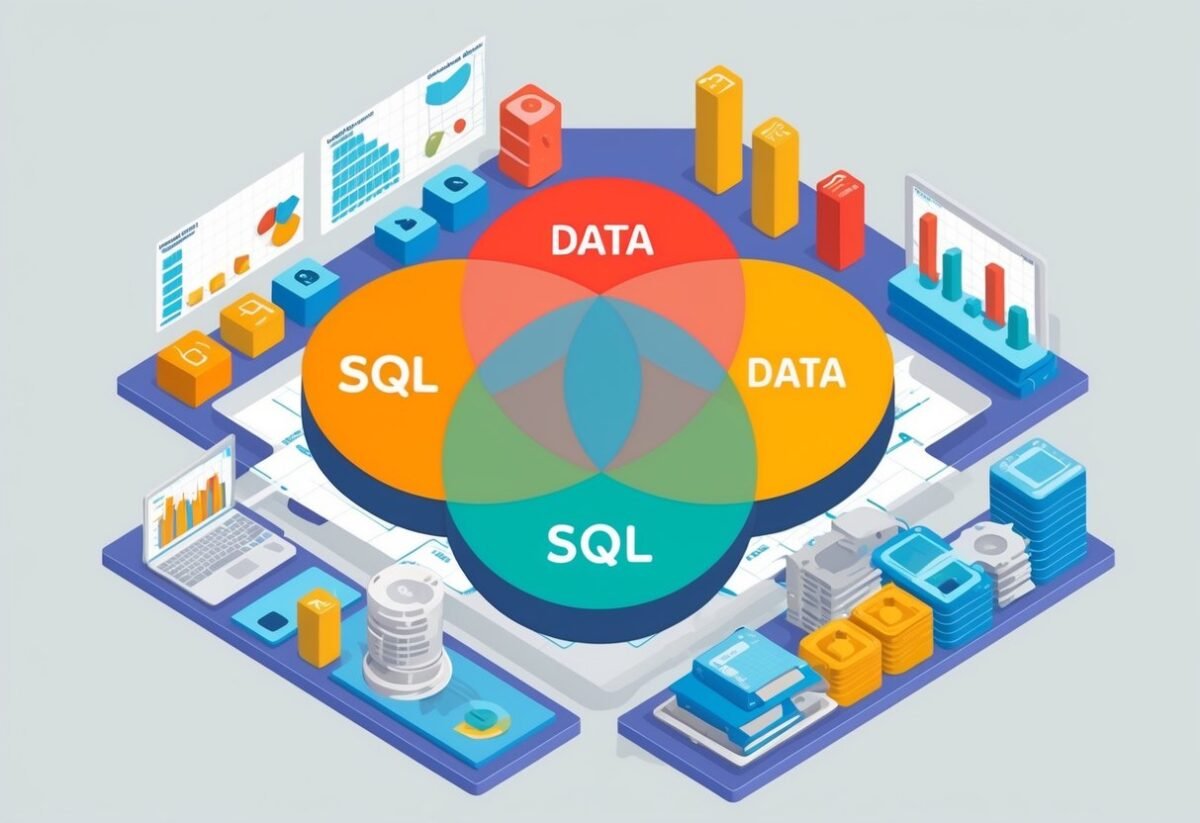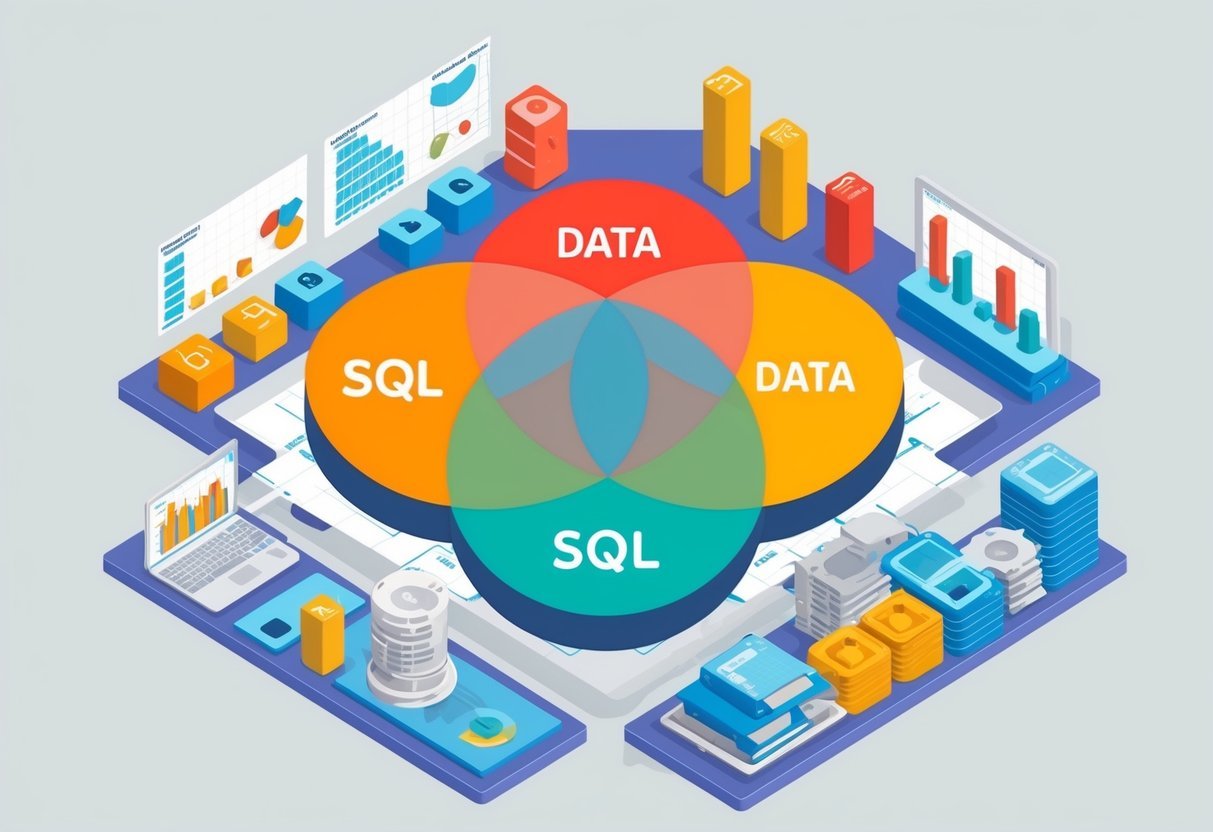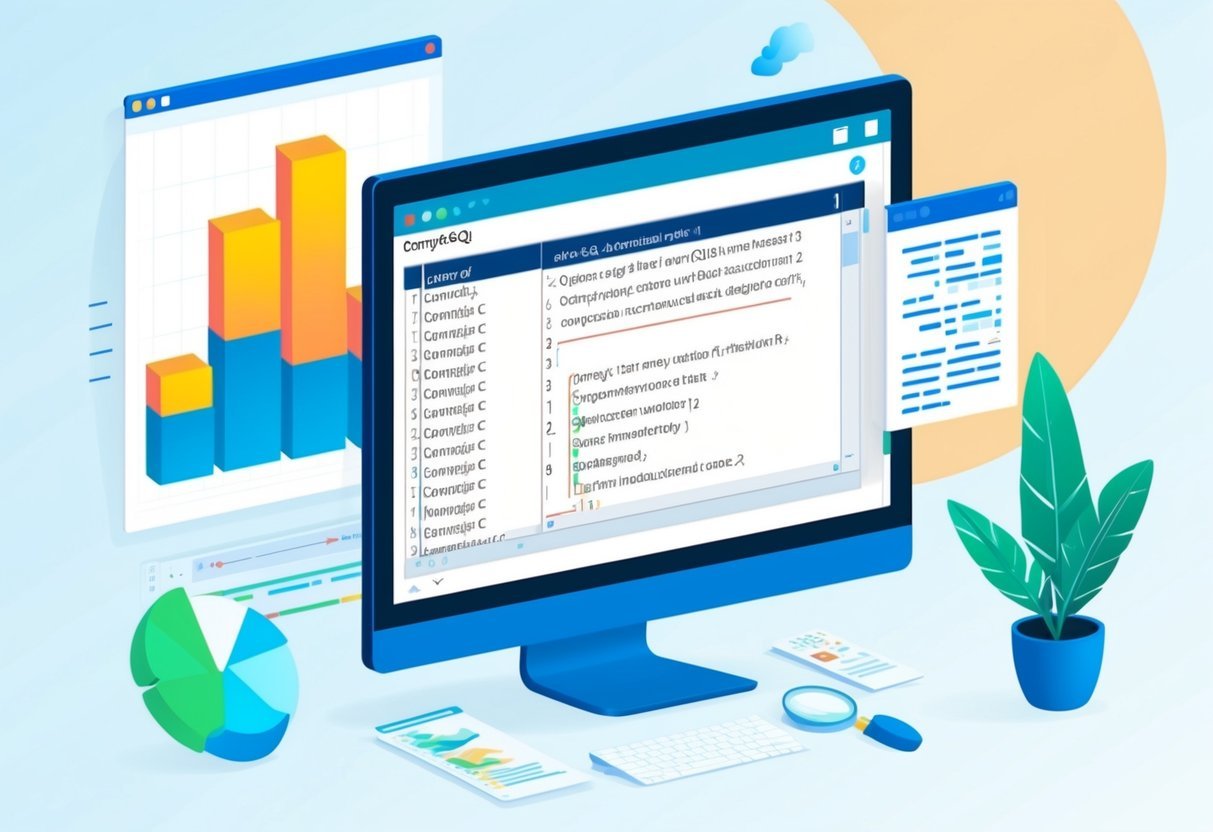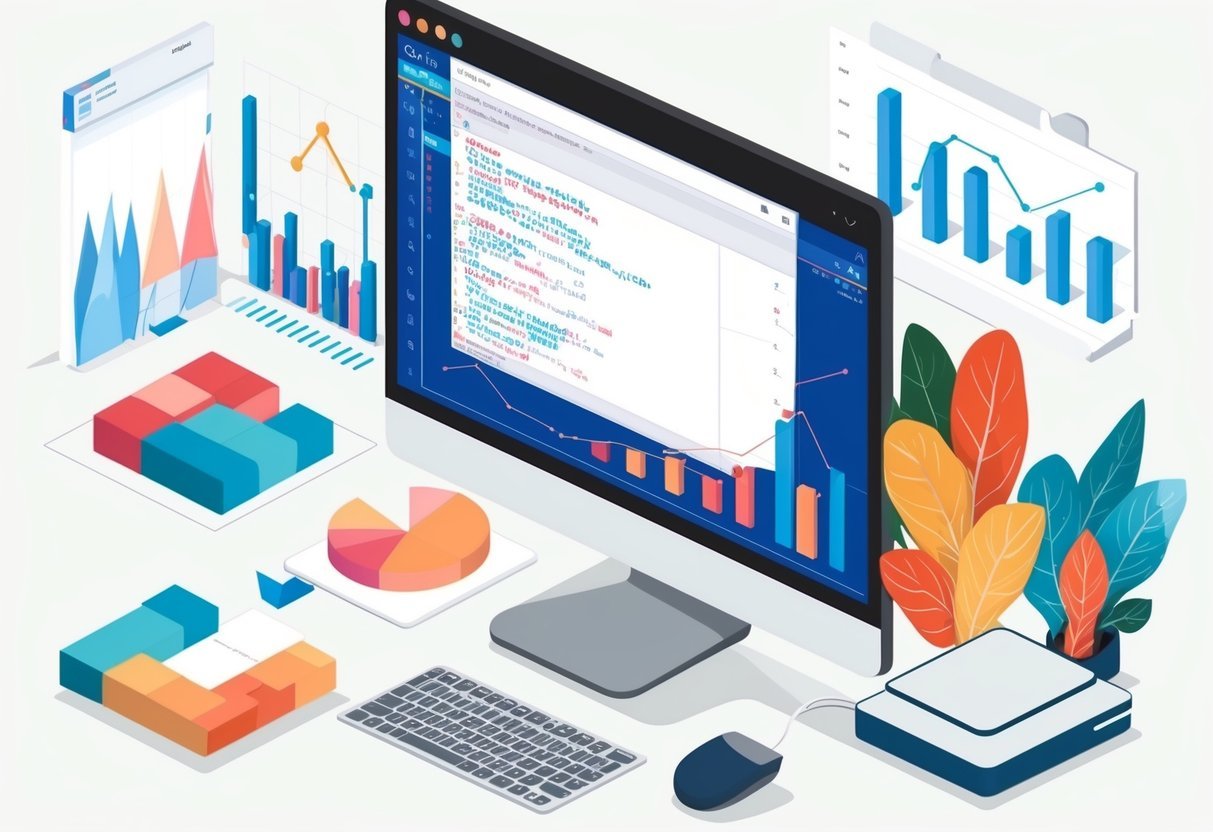Getting Started with Seaborn for Categorical Data Visualization
Seaborn is a powerful tool for visualizing categorical data in Python. Built on top of Matplotlib, it provides an easy-to-use interface for creating informative plots.
With Seaborn, users can capture patterns and relationships between variables.
To begin, install Seaborn by using pip install seaborn. Import it into your Python script along with Matplotlib:
import seaborn as sns
import matplotlib.pyplot as plt
Understanding various categorical plot types is crucial. Seaborn offers several options, such as:
- Bar Plot: Ideal for comparing quantities in different categories.
- Box Plot: Useful for displaying the distribution and variation within categories.
- Violin Plot: Combines features of box and density plots for deeper insights.
To create a categorical plot, data preparation is key. Data should be organized in a Pandas DataFrame.
Here’s a simple example to make a bar plot:
sns.barplot(x='category', y='value', data=df)
plt.show()
Seaborn’s flexibility allows customization of plots with ease. Adjust colors, styles, and layouts to suit your data’s needs.
Documentation can provide further guidance. For more on Seaborn’s capabilities, refer to the Seaborn documentation as a comprehensive guide.
The resource provides examples and tips to improve your visualization skills.
Understanding Categorical Variables in Datasets
Categorical variables are a vital part of data analysis. They represent different groups or categories, like colors or brands. Unlike numerical variables, they don’t have a natural order. This makes them unique but also requires special handling in data analysis.
In datasets, identifying categorical variables is the first step. Tools like Pandas in Python make it easy to handle these variables.
Using the Categorical datatype in Pandas, one can efficiently manage large datasets with many categories. This helps in reducing memory usage and increasing the performance of operations.
Categorical variables can be visualized using various plot types. In Seaborn, plots like box plots and bar plots are useful for this purpose.
These visualizations allow analysts to see the distribution and frequency of categories in a dataset. This is crucial for gaining insights and making data-driven decisions.
When working with categorical data, it’s important to ensure all categories are correctly defined. Any missing or incorrect data can lead to errors in analysis.
Data cleaning and preprocessing steps often include validating these variables.
Basic Categorical Plots in Seaborn
Seaborn offers powerful tools for visualizing data, especially when exploring the relationship between categorical variables. Among these are the bar plot, count plot, strip plot, and swarm plot, each serving a unique purpose in data illustration.
Bar Plot Essentials
A bar plot, or barplot, is useful for displaying the quantities of categorical data. It uses rectangular bars to compare different categories. The height of each bar indicates the value of the category it represents.
Frequently used with an emphasis on representing and comparing category counts or other derived metrics, bar plots make it easy to identify key patterns at a glance.
This plot type is particularly good for datasets with few categories.
Bar plots can be customized with color and hue to represent additional variables, enhancing their analytical depth.
Seaborn’s barplot function provides a straightforward way to generate these plots by specifying the x and y variables and an optional hue for further breakdown.
Count Plot Basics
A count plot is similar to a bar plot but focuses specifically on counting the occurrences of each category in a dataset.
Using Seaborn’s countplot function, one can quickly visualize the frequency distribution of a categorical variable. This is especially helpful when examining categories with many observations.
The count plot automatically calculates the number of occurrences, eliminating the need for pre-summarizing the data.
Users can also add a hue to count plots to show the counts of subcategories within each main category, offering further detail and insights into the data while keeping visualization simple and clean.
Strip Plot and Swarm Plot
Strip plots and swarm plots help visualize all data points in a variable, giving insights into distribution and density.
The strip plot displays individual data points along a category axis without indicating data spread, while the swarm plot arranges points to avoid overlap and show structure.
Both plots are beneficial for understanding value distribution within categories and observing potential data patterns.
In Seaborn, they can be generated using the stripplot and swarmplot functions. They are ideal for small datasets or when it is important to visualize all data points.
These visual aids help highlight clustering and spread, providing a better understanding of how data points are distributed across categories.
Advanced Categorical Plots
Exploring advanced categorical plots in Seaborn involves understanding variations of box plots, the detailed features of violin plots, and the unique aspects of point plots. Each type offers specific insights into categorical data, allowing for more nuanced data analysis and visualization.
Box Plot Variations
Box plots provide a visual summary of data through their quartiles and whiskers. Variations of this plot can include adding hue semantics for better category distinction.
Adjusting the hue parameter allows different colors for different categories, enhancing clarity.
Another variation is to adjust the order parameter, controlling the order of appearance of categories on the axis.
Adding data points, often termed as “dodging,” helps to prevent overlap and provides a clearer picture.
By using these variations, users can gain deeper insights into the data distribution and detect outliers more effectively.
Violin Plot Exploration
Violin plots illustrate data distributions and are similar to box plots but with added density estimates. This plot reveals more detail, such as the distribution’s shape within each category.
The plot includes both a box plot and a kernel density plot.
Exploring violin plots often involves adjusting the scale and bandwidth to focus on specific aspects of the data.
Adding hue semantics helps differentiate between subgroups within the categories.
Violin plots can display multiple categories side by side, making them ideal for comparing several groups simultaneously.
Point Plot Features
Point plots display data points using position rather than bars or boxes, emphasizing the mean of data points. They are useful for showing how categories compare to each other.
By adjusting the hue parameter, these plots can display another layer of categorization, offering more nuanced insights.
Dodging is effective in point plots, separating different hues to make the comparison clearer.
The plot’s confidence intervals provide a visual cue on data reliability, making it easier to understand variations within the data.
Modifying point size or style can highlight specific trends or segments, making point plots a versatile tool for categorical data examination.
Categorical Estimate Plots
Categorical estimate plots are tools in data visualization that reveal aggregate patterns and trends within categorical data. They display statistical estimates, such as means or medians, to help understand relationships and summaries within data groups.
Bar Plot is a simple and effective option. It represents data using rectangular bars with lengths proportional to the values they represent. This is useful for comparing different groups side by side.
Point Plot enhances visual clarity by placing points at each categorical level. This makes it easier to compare differences within groups. It can show changes over time or across conditions.
Another visualization approach is the Count Plot. It displays the number of occurrences of each category. This type is handy for understanding the distribution of categorical variables in a dataset.
These plots can incorporate techniques like Kernel Density Estimation (KDE) for smoothing data representation and emphasizing distribution trends.
KDE can be useful in highlighting underlying patterns that may not be immediately visible.
Seaborn, a popular data visualization library, provides these categorical estimate plots. It simplifies the creation of statistical graphics for analyzing patterns, making it accessible even for those new to data visualization.
Explore more examples and guidance on using these plots on GeeksforGeeks’ tutorial on Seaborn categorical plots. This article provides a comprehensive overview of the types of categorical plots available in Seaborn.
Distribution Plots within Categories
Understanding categorical data can be enhanced with distributional visualization techniques. These methods offer insights into data patterns and variations within categories.
A Distribution Plot shows how data is spread over a range. This can help identify the probability density function of a dataset. Within categories, this visualization clarifies how different groups compare in terms of distribution.
The Histogram is a common type of distribution plot. It creates a visual summary of the data by plotting frequencies within rectangular bars.
This method reveals the shape of the data distribution for each category, helping observers see differences across groups.
Another useful plot is the Kde Plot. It uses a kernel density estimation to smooth the observations and present a continuous probability density curve.
This provides a clearer view of the data spread within different categories than a rigid histogram.
These plots allow for better data exploration and comparison within and across categories, helping convey trends and patterns that may not be immediately visible.
Analysts use these plots to detect features like skewness, peaks, and the spread of data in each category.
For categorical datasets, these distribution plots support detailed examination and facilitate deeper insights beyond basic statistics.
By choosing the right plot, one can represent categorical data visually and enhance their analysis and communication efforts.
Faceting with Categorical Data
Faceting is a technique used to create multiple subplots for different subsets of data. This method is useful for visualizing complex relationships with categorical data.
Seaborn’s FacetGrid provides a simple way to map data to these subplots.
By using FacetGrid, users can create separate plots for each category. This helps in comparing various aspects like trends or distributions across different groups.
Key Features of Faceting
-
Categorical Axis: Allows easy interpretation by placing categorical data on one axis, making it simple to spot differences and similarities among categories.
-
Customizable Subplots: Adjust the arrangement, size, and style of subplots to create a clear and informative layout.
-
Pair Grid and Cluster Map: Pair Grid is another option for creating a grid of plots, often used for pairwise relationships. Meanwhile, a Cluster Map is useful for visualizing patterns in data with a heatmap-style layout.
Example Usage
import seaborn as sns
import matplotlib.pyplot as plt
# Sample data
tips = sns.load_dataset("tips")
# FacetGrid example
g = sns.FacetGrid(tips, col="sex", row="time")
g.map(sns.scatterplot, "total_bill", "tip")
plt.show()
This code demonstrates how FacetGrid separates the plot by sex and time, showing variations in tips across these categories.
Such plots enhance the ability to analyze multi-dimensional data.
For further reading on faceting and related techniques, explore Faceting with Seaborn.
Comparative Analysis with Categorical Plots
Categorical plots are essential when comparing data groups. These plots help visualize differences across categories and between categorical and numerical data.
Plots like bar plots, box plots, and violin plots provide insights into the distribution of values in each group.
Bar Plots: These are useful for comparing categorical data by showing the quantity of each category. They display the relationship between a categorical variable and a continuous variable.
Box Plots: Box plots are effective for summarizing the distribution of a dataset. They visually present the median, quartiles, and outliers within categories, making them ideal for side-by-side comparisons.
Violin Plots: These plots combine the features of box plots and density plots. Violin plots are great for comparing categories as they show the full distribution of the data across different categories.
Using multiple plots enhances the understanding of complex data. In a grid, they can simultaneously display several categories and relationships among them.
This multifaceted approach offers a comprehensive view.
When performing a comparative analysis, it is crucial to identify any patterns or trends between categories and continuous variables.
This helps in uncovering insights into relationships within the data, facilitating informed decision-making.
Customizing Plots for Enhanced Insights
When using Seaborn to visualize data, customization can make plots not only informative but also appealing.
Aesthetic tweaks and practical adjustments like jitter and dodging can refine visual representations, allowing clearer insight into categorical data differences.
Aesthetic Enhancements
Creating aesthetically pleasing plots makes data interpretation more intuitive. Seaborn offers several options to enhance a plot’s appearance.
Color palettes can be customized to improve visual appeal and highlight key differences between categories. Using consistent styles for lines and markers can also improve readability and focus.
Fonts and text adjustments can help to clarify labels and titles. Legends and annotations should be placed strategically for easy understanding without cluttering the visual space.
This customization helps to guide viewers’ attention to essential details, providing a more engaging and insightful experience.
Adjusting Plot Jitter and Dodging
The jitter parameter is useful for scatter plots with many overlapping points, adding small random noise to spread data points out.
This adjustment helps to better visualize distributions within categories, especially in cases where data points are dense.
Dodging is another technique used particularly with bar and point plots to separate overlapping elements on the categorical axis. It shifts elements slightly, reducing overlap and improving clarity.
Adjusting these features in Seaborn helps demystify data by making plots clearer and easier to analyze, ensuring that key insights are not lost in visual clutter.
Integrating Seaborn with Pandas for Efficient Plotting
Seaborn is a powerful Python Data Visualization Library that works seamlessly with Pandas. It enables users to create sophisticated plots with simple commands.
By combining these tools, users can visualize data efficiently and effectively.
Pandas provides a data structure perfect for handling large datasets, making it ideal for data exploration. When working with categorical data, Pandas supports a special type called the Pandas Categorical Datatype. This datatype helps in managing data that falls into a fixed number of categories.
By using Pandas dataframes, data researchers can clean and manipulate data before it is visualized. Seaborn can easily take a Pandas dataframe as input, allowing users to create detailed categorical plots.
This integration simplifies workflows and reduces the amount of code needed.
Some common Seaborn plots include:
- Bar plots for comparing categorical data
- Box plots to show distributions within categories
- Count plots, which are particularly helpful to visualize frequencies
Creating plots in Seaborn becomes even more efficient with Pandas.
For example, you can quickly create plots with the following code snippet:
import seaborn as sns
import pandas as pd
# Sample dataframe
df = pd.DataFrame({"Category": ["A", "B", "C"], "Values": [10, 20, 15]})
# Box plot
sns.boxplot(data=df, x="Category", y="Values")
This simple integration empowers users to explore and present data findings with increased agility. It makes Seaborn and Pandas a formidable combination for anyone interested in data science and visualization.
Seaborn’s Unified API for Flexible Plotting

Seaborn is popular for its unified API, which simplifies creating complex plots. This unified approach allows users to switch between different plot types smoothly.
By using Figure-Level Functions and Axes-Level Functions, Seaborn offers flexible plotting solutions adaptable to various datasets and visualization needs.
Figure-Level Functions like catplot and relplot manage the entire figure, making it easy to create multi-plot grids. These functions are suitable for generating multiple subplots with consistent axes, labels, and titles.
-
Catplot: Ideal for visualizing categorical data relationships. It supports various plot types, such as bar, point, and box plots.
-
Relplot: Focuses on relationships between variables in a dataset. It can produce scatter and line plots, offering adaptability across different datasets.
Axes-Level Functions provide more control over individual plot elements. They are suitable for creating single, detailed plots.
- Functions like
stripplotandboxplothelp visualize categorical data by addressing overplotting issues and showing distribution details.
The unified API is beneficial because it enhances visualization through consistent syntax. Users can focus on their data while employing various plot styles without learning entirely new functions for each type.
For more on these plots, see the Seaborn documentation.
Leveraging Seaborn Plots in Machine Learning and Data Science
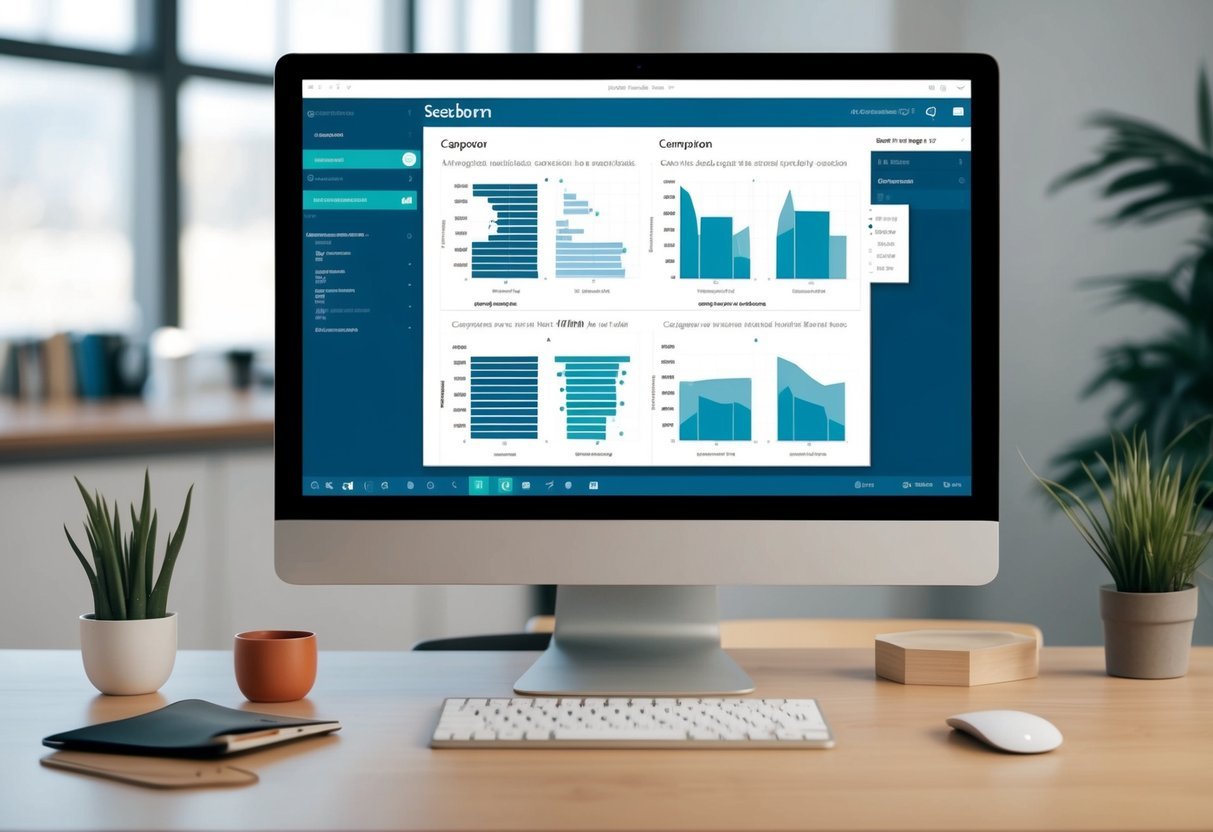
Seaborn is a powerful library in Python used widely in machine learning and data science. It makes it easy to visualize and understand complex datasets.
These visualizations can aid in the exploration of patterns and trends.
Categorical plots in Seaborn help to analyze dataset features that group data into discrete categories. Common examples are the Iris, Tips, and Mpg datasets.
Bar plots and violin plots provide insights into these categories, revealing the underlying structure of the data.
When working with the Iris Dataset, one might use a scatter plot to compare petal and sepal dimensions across species. Doing so can reveal clusters and patterns significant for classification tasks in machine learning.
The Tips Dataset is useful for regression analysis. Seaborn offers tools like line plots to examine relationships between variables, such as total bill and tips given. This is especially useful in data science for understanding correlation effects.
In the context of the Mpg Dataset, Seaborn’s pair plots present how different variables like horsepower and fuel efficiency interact. This type of visualization is valuable in predictive modeling, allowing data scientists to uncover hidden relationships.
Key Seaborn Features:
- Ease of Use: Intuitive syntax and easy integration with pandas DataFrames.
- Aesthetics: Provides beautiful, customized visualizations without much code.
- Versatility: Supports a variety of plots, ideal for different datasets and analytical purposes.
Seaborn enhances both data exploration and presentation, making it an essential tool for anyone involved in machine learning and data science.
Frequently Asked Questions
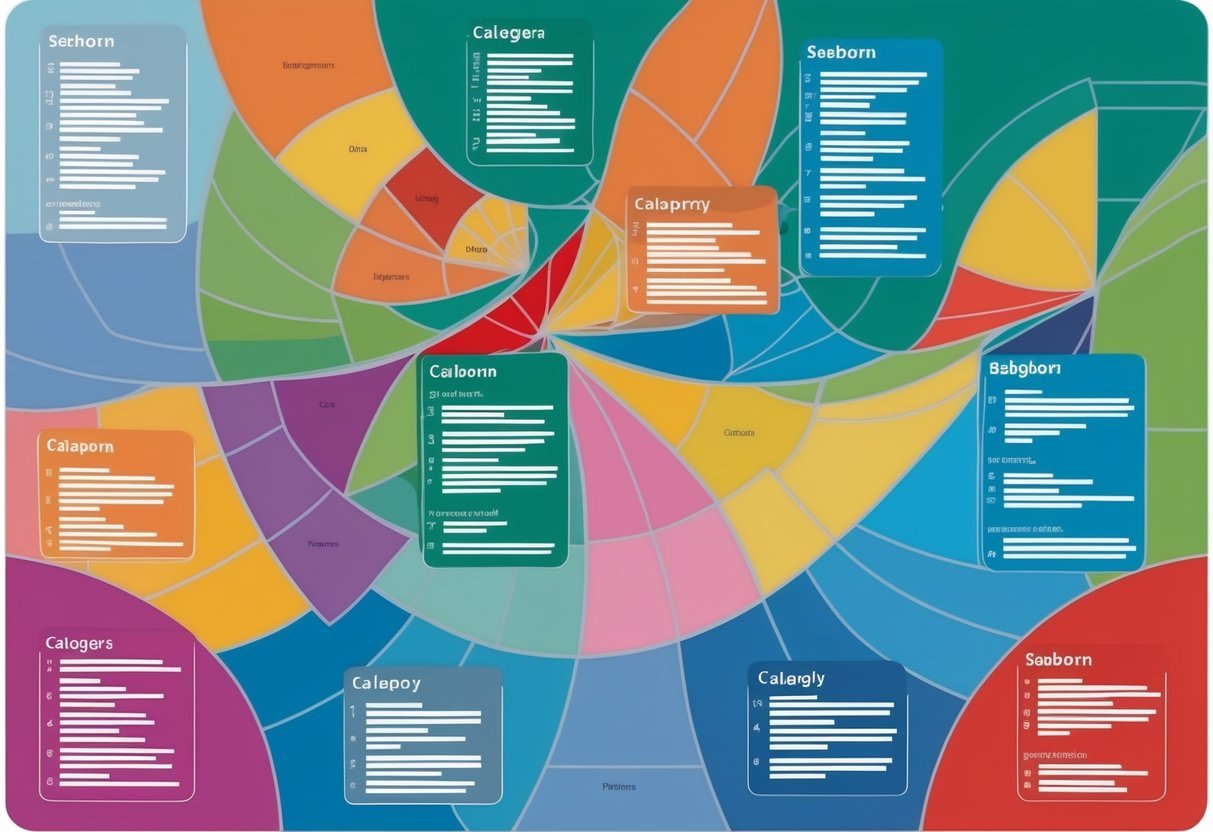
Seaborn is a powerful tool for creating clear and informative visualizations of categorical data. This section covers how to effectively use different Seaborn plots for comparing and understanding relationships in categorical datasets.
How can I use Seaborn to plot the relationship between two categorical variables?
To show the relationship between two categorical variables, Seaborn offers the catplot function. This function can create various plots like bar plots, box plots, and violin plots, making it versatile for different kinds of categorical data analysis.
What are the most effective Seaborn plots for comparing categorical data?
Effective plots for comparing categorical data in Seaborn include bar plots, box plots, and point plots. Bar plots are useful for comparing counts or summary statistics. Box plots and violin plots can provide insights into the distribution and variability of data across categories.
What Seaborn function is recommended for creating catplots?
The recommended function for creating catplots is sns.catplot(). It allows for the creation of many types of categorical plots by specifying the kind parameter, which can be set to options such as ‘strip’, ‘swarm’, ‘box’, ‘violin’, or ‘bar’.
Which Seaborn plot types are best suited for visualizing categorical data distribution?
For visualizing categorical data distribution, Seaborn’s box plots and violin plots excel. Box plots provide a summary of the data distribution showing medians and quartiles, while violin plots add more detail about data density.
How do you create a Seaborn plot to visualize the relationship between categorical and continuous variables?
To visualize relationships between categorical and continuous variables, the sns.boxplot() and sns.violinplot() functions can be used effectively. These plots show how a continuous variable is distributed within each category, highlighting differences or similarities.
What are some examples of visualizing categorical data using both Seaborn and Matplotlib?
Seaborn enhances Matplotlib’s functionality with high-level plotting functions.
For example, a comparison of subcategories can be done using clustered bar plots in Seaborn, while Matplotlib can be used for custom annotations or complex layouts.
This combination can create detailed and professional visualizations.














